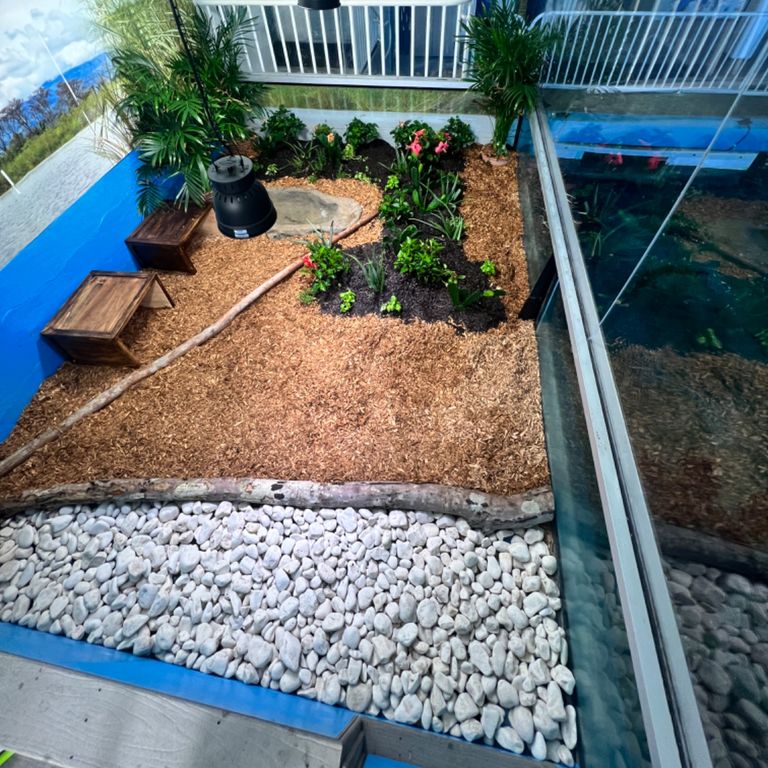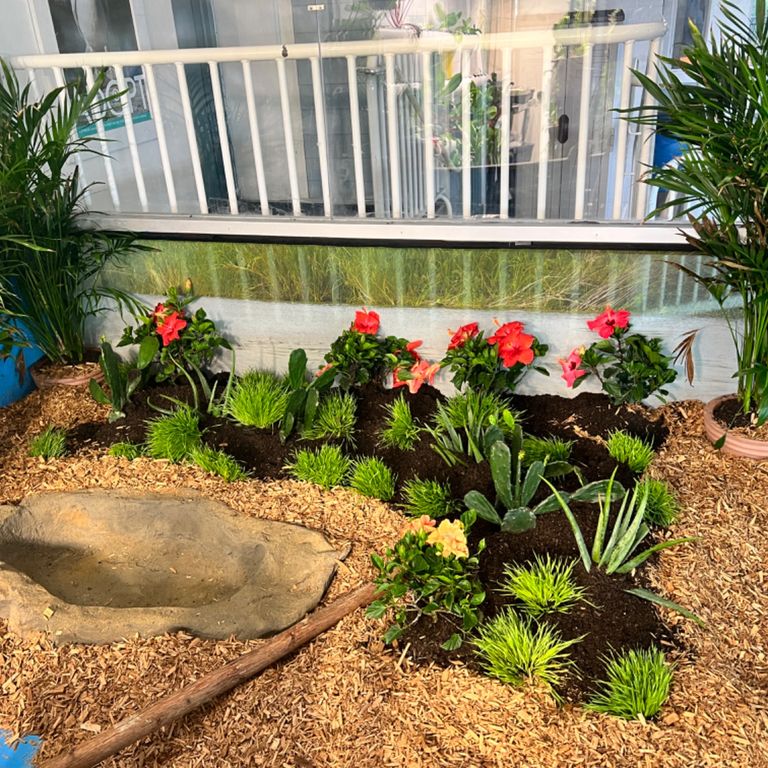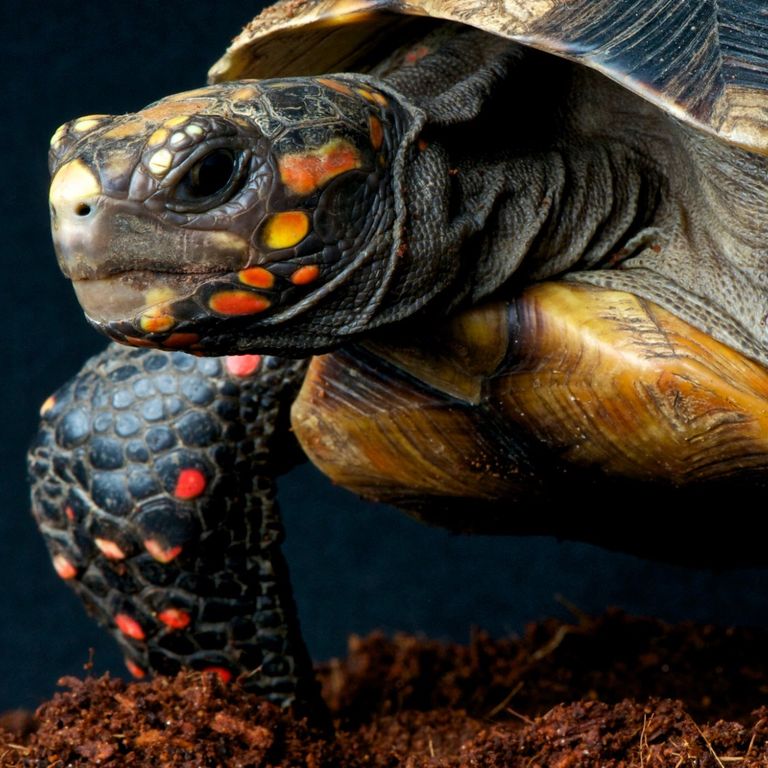


Red footed tortoise habitat
By Brian Braitsch
The design of a zoo tortoise enclosure will depend on the species of tortoise and its natural habitat requirements, as well as the available space and budget. However, in general, a zoo tortoise enclosure should provide ample space for the tortoise to move around, bask in the sun, and forage for food. The enclosure should have a temperature gradient so the tortoise can regulate its body temperature and a substrate suitable for digging and burrowing. The enclosure should also have a shelter for the tortoise to retreat to and protection from predators. In addition, the enclosure should have a secure perimeter to prevent the tortoise from escaping and to keep out unwanted animals. Finally, the enclosure should be designed with safety and ease of maintenance in mind for both the animals and keepers.
Size of the enclosure: The size of the enclosure depends on the size of the tortoise. As a general rule, a red-footed tortoise needs at least 8-12 square feet of space. However, larger is always better, as it allows the tortoise to move around more freely.
Substrate: Red-footed tortoises require a substrate that allows for burrowing, as they enjoy digging and burying themselves. A mixture of coconut coir, peat moss, and organic topsoil can be used to create a substrate that is perfect for burrowing.
Lighting: Red-footed tortoises require access to UVB lighting in order to properly synthesize vitamin D3, which is essential for healthy shell growth and overall well-being. A high-quality UVB lamp with a reflector and a basking spot should be provided to ensure that the tortoise receives adequate UVB exposure.
Temperature: Red-footed tortoises are tropical animals and require a temperature range of 75-85 degrees Fahrenheit during the day and a nighttime temperature of around 70 degrees Fahrenheit. A basking spot should be provided, where the temperature can be elevated to around 90 degrees Fahrenheit.
Humidity: Red-footed tortoises require a humidity level of around 70%. This can be achieved by misting the enclosure with a spray bottle several times a day and providing a shallow water dish for soaking.
Diet: Red-footed tortoises are omnivores and require a varied diet that includes leafy greens, fruits, and protein sources such as insects, worms, and cooked chicken. A calcium supplement should be provided to ensure healthy shell growth.
Enrichment: Red-footed tortoises are active and curious animals that benefit from environmental enrichment. Providing hiding places, climbing structures, and items to investigate such as rocks and logs can help keep them mentally stimulated and physically fit.
When designing an indoor habitat for a red-footed tortoise, it is important to keep in mind the above requirements to ensure the health and well-being of the tortoise. It is also important to consult with a veterinarian who is knowledgeable about reptiles to ensure that the enclosure is set up correctly and that the tortoise is receiving proper care.
